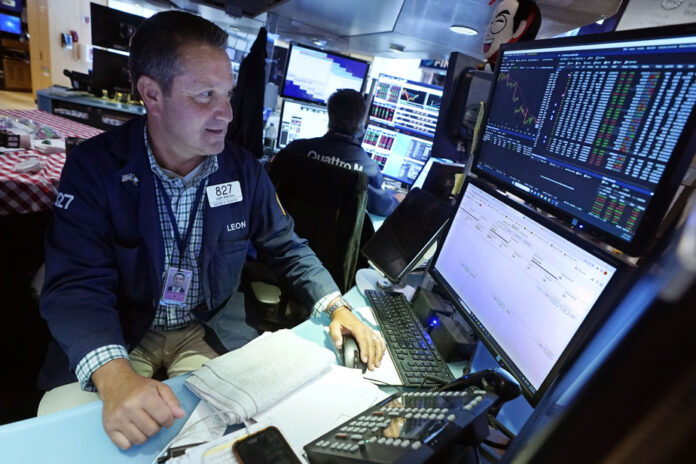(New York) The New York Stock Exchange ended lower on Friday, resuming a cautious posture ahead of the meeting of the American central bank (Fed) and fearing the consequences of a major strike in the automobile sector.
The Dow Jones dropped 0.83%, the NASDAQ lost 1.56% and the broader S
Members of the large union UAW (United Auto Workers) employees of the three major American manufacturers General Motors, Ford and Stellantis began a strike on Friday, after two months of unsuccessful negotiations to renew their collective agreement.
“At the moment this only affects three sites, but we expect it to expand due to lack of compromise,” commented Nancy Vanden Houten of Oxford Economics.
“The economic impact is expected to be temporary, but there is a risk of disruptions in the recovering supply chain” from the coronavirus pandemic, she added.
Despite the strike, General Motors ended up 0.86%, with Ford falling 0.08%.
Furthermore, for Sam Stovall, of CFRA, investors remain on alert regarding inflation, which accelerated in August, according to the CPI (consumption) and PPI (production) price indices published Wednesday and Thursday.
“People are tense before the Fed (American central bank) meeting,” adds the analyst. Because even if the scenario of a pause in the tightening cycle seems certain, “there is still a lack of clarity” as to what happens next, and a possible new rate increase in November or December.
This apprehension is also due to the insolent health of the American economy, which has continued to defy forecasts for months.
On Friday, the Fed reported that industrial production rose 0.4% in August from a month ago, more than the 0.1% expected by economists.
Furthermore, manufacturing activity in the New York region recovered significantly in September, to 1.9 points compared to -19 points in August, while economists predicted a further contraction (-10 points).
The bond market reflected the prevailing anxiety. The yield on 10-year US government bonds thus increased to 4.33%, compared to 4.28% the day before at closing, very close to the 4.36% reached at the end of August, a 15-year high.
To add to the nervousness, Friday was a so-called Four Witches Day, which marked the maturity of hundreds of billions of dollars of financial derivative products based on the movement of individual stocks and indices.
This deadline often causes volatility in the market, with movements more marked than usual.
Friday also marked mid-September, but the second half of this month is considered, based on historical data, to be the worst period of the year for the market, recalled Sam Stovall.
Rate tensions have hurt giant NASDAQ tech stocks like Nvidia (-3.69%), Amazon (-2.99%), Meta (-3.66%) and Microsoft (-2.50%). .
The day after its IPO, which saw it gain nearly 25% during the session, the microprocessor designer Arm consolidated, falling 4.47%. The British group is now valued at $62 billion.
Despite results above expectations, professional software publisher Adobe plunged (-4.21%), investors having judged the group’s forecasts disappointing, even if they came out in line with those of analysts.
Adobe, which launched several versions of its software on Wednesday now using generative artificial intelligence (AI), suffers from comparison with other major AI players, who are showing higher growth.
Disney was sought after (1.30%), the day after the publication of information from the Bloomberg agency, according to which the entertainment giant would consider the sale of the large national channel ABC to the media group Nexstar Media Group.
According to several media, the Burbank (California) group also received an offer from media mogul Byron Allen to the tune of ten billion dollars.
The strength of the battery metals and financial sectors allowed the flagship index of the Toronto Stock Exchange to close higher on Friday, while the major American indices fell, dragged down by losses in the technology sector.
The composite index S
In the foreign exchange market, the Canadian dollar traded at an average rate of 73.93 US cents, down from Thursday’s rate of 73.99 US cents.















